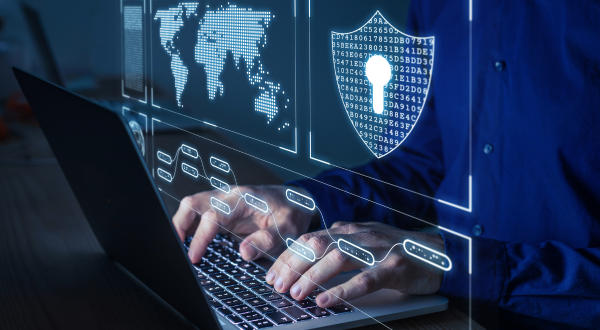
In an era dominated by digital transformation, SMBs play a crucial role in driving innovation and economic growth. However, with increased reliance on technology comes the pressing need for robust cybersecurity measures. As we step into 2024, SMBs must be vigilant and proactive in addressing emerging cybersecurity trends to protect their sensitive data, maintain customer trust, and ensure business continuity.
Ransomware Evolution
According to the OpenText Cybersecurity 2023 Global Ransomware Survey, almost half of SMBs and enterprises (46% each) have experienced a ransomware attack. Sixty-five percent of SMBs don’t think or aren’t sure they are a ransomware target; a slight increase from 59% in 2022. Ransomware attacks are only continuing to evolve and becoming more sophisticated and targeted. SMBs are often attractive targets due to their perceived vulnerability.
In 2024, it’s crucial for SMBs to invest in advanced threat detection and response systems to detect and neutralize ransomware before it can cause irreparable damage. Regular employee training on recognizing phishing attempts and implementing robust backup strategies are essential components of a comprehensive defense against ransomware.
Zero Trust Architecture
The traditional perimeter-based security model is no longer sufficient in the face of advanced cyber threats. Zero Trust Architecture, which assumes that no user or system is inherently trustworthy, is gaining prominence. SMBs should implement strict access controls, multi-factor authentication, and continuous monitoring to ensure that only authorized entities can access critical systems and data.
Cloud Security Challenges
As SMBs increasingly migrate to cloud-based solutions, the security of cloud environments becomes paramount. It is essential to understand shared responsibility models, conduct regular security assessments, and employ encryption for data both in transit and at rest. Additionally, SMBs should choose cloud service providers with strong security protocols and compliance standards.
AI and Machine Learning in Cybersecurity
As cyber threats become more sophisticated, so do the tools to combat them. AI and machine learning are increasingly being used to analyze vast amounts of data, identify patterns, and predict potential security incidents. SMBs should consider integrating AI-driven security solutions to enhance their threat detection capabilities and respond more effectively to emerging cyber threats.
SIEM, security information and event management, is a tool that collects and analyzes security event logs from different sources within IT infrastructures, including network devices, servers, applications, and endpoints. This provides a centralized view of security events and incidents. It uses advanced analysis and cross-correlation to automatically filter out false alerts so real threats bubble to the surface.
Regulatory Compliance
Data protection regulations are continually evolving, and traditional approaches to cyber management are no longer adequate for this changing landscape. Regulations are getting tougher, risk is becoming greater, and the price of compliance, or lack thereof, is growing, especially for SMBs. Compliance is no longer a reactive effort – it has shifted to a strategic, proactive responsibility for SMBs in all industries – and especially so in the highly-regulated medical and financial fields.
Staying abreast of regulatory changes, implementing necessary safeguards, and conducting regular compliance audits are essential for maintaining legal and regulatory compliance.
As technology advances, so do the threats that businesses face in the digital landscape. For SMBs, understanding and addressing these emerging cybersecurity trends is critical to protecting their assets, maintaining customer trust, and ensuring long-term success. By staying proactive and investing in robust cybersecurity measures, SMBs can navigate the evolving threat landscape and build a secure foundation for their digital future.
